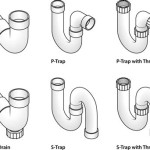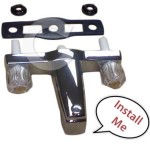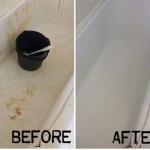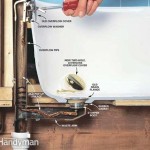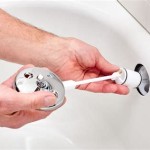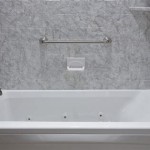How To Give a Dog Bath Without a Bathtub
Maintaining a dog's hygiene is a crucial aspect of responsible pet ownership. Regular bathing not only keeps a dog smelling fresh but also contributes significantly to its overall health. It helps remove dirt, debris, and allergens from their coat, preventing skin irritations and infections. While bathtubs are a common bathing location, not all dog owners have access to one or find it suitable for their canine companion. This article provides a comprehensive guide on how to effectively bathe a dog without relying on a bathtub.
Before beginning, it is essential to gather all the necessary supplies. This preparation ensures a smooth and efficient bathing process, minimizing stress for both the dog and the owner. The required items include a dog-specific shampoo, towels, a source of water (hose, bucket, or sink), a grooming brush, and potentially a non-slip mat for the bathing area.
Choosing the Right Location
The first key step in bathing a dog without a bathtub is selecting an appropriate location. The ideal location should be easily accessible, comfortable for both the dog and the owner, and allow for effective drainage. Several viable options exist, each with their own advantages and disadvantages.
An outdoor space, such as a backyard or patio, can be an excellent choice, especially during warmer months. This allows for ample space and easy cleanup of any splashed water or loose fur. When utilizing an outdoor area, consider the temperature and weather conditions to avoid chilling the dog. A garden hose with an adjustable nozzle is a convenient water source in this scenario.
Alternatively, a laundry room or utility sink can serve as a suitable indoor bathing area. These spaces often have tile or linoleum flooring, which is water-resistant and easy to clean. A utility sink provides a contained space, minimizing the spread of water and making it easier to control the washing process. Ensure the sink is thoroughly cleaned before and after each use.
Another option is to use a walk-in shower. While technically a shower rather than a bathtub, it still avoids the traditional bathtub structure and its potential difficulties for some dogs. If using a walk-in shower, consider placing a non-slip mat on the floor to prevent the dog from slipping and potentially injuring itself.
Regardless of the chosen location, it is crucial to ensure the area is safe and secure. Remove any potential hazards, such as electrical cords or sharp objects, that could pose a risk to the dog or the owner. Prior to introducing the dog to the bathing area, acclimate it to the space by allowing it to explore and sniff around. This familiarization process can help reduce anxiety and make the bathing experience more pleasant.
Preparing the Dog for the Bath
Proper preparation is crucial for minimizing stress and ensuring a cooperative dog during the bathing process. This involves grooming the dog to remove loose fur and tangles, as well as acclimating the dog to the water and the bathing environment.
Begin by thoroughly brushing the dog's coat to remove any loose fur, mats, or debris. This step is especially important for dogs with long or thick fur, as it prevents tangles from worsening when wet and allows the shampoo to penetrate the coat more effectively. Use a brush appropriate for the dog's coat type, such as a slicker brush or a de-shedding tool.
Once the dog is brushed, gradually acclimate it to the water source. Start by wetting the dog's paws and legs with a gentle stream of lukewarm water. Avoid using hot or cold water, as this can be uncomfortable and potentially harmful. As the dog becomes more comfortable, gradually wet the rest of its body, taking care to avoid getting water in its eyes, ears, and nose. Speak to the dog in a calm and reassuring voice throughout the process to help it feel more relaxed.
For dogs that are particularly anxious or resistant to bathing, consider using positive reinforcement techniques. Offer treats or praise during each step of the process to create a positive association with bathing. Short, frequent bathing sessions are preferable to long, infrequent ones, especially for dogs that are new to bathing. Over time, the dog will likely become more accustomed to the process and less resistant to it.
If the dog is extremely fearful or aggressive towards bathing, consult with a veterinarian or a professional dog groomer. They can provide guidance and support on how to address the dog's anxiety and make the bathing experience safer and more manageable.
The Bathing Process
With the dog prepared and the bathing area set up, the actual bathing process can begin. This involves applying shampoo, rinsing thoroughly, and drying the dog's coat.
Start by applying a dog-specific shampoo to the wet coat. Human shampoo is not suitable for dogs, as it can disrupt their skin's natural pH balance and lead to irritation or dryness. Choose a shampoo that is formulated for the dog's specific coat type and skin condition. For example, dogs with sensitive skin may benefit from a hypoallergenic shampoo, while dogs with oily coats may require a degreasing shampoo.
Gently massage the shampoo into the dog's coat, working from head to tail. Pay particular attention to areas that tend to accumulate dirt and debris, such as the paws, belly, and under the tail. Avoid getting shampoo in the dog's eyes, ears, and nose. If shampoo accidentally gets into these areas, rinse them immediately with clean water.
Once the entire coat is lathered, rinse thoroughly with lukewarm water. Ensure all traces of shampoo are removed, as residual shampoo can cause skin irritation. Continue rinsing until the water runs clear. Take extra care when rinsing around the ears to prevent water from entering the ear canal, which can lead to ear infections.
After rinsing, gently squeeze excess water from the dog's coat. Use a towel to blot the coat dry, working from head to tail. Avoid rubbing the coat vigorously, as this can cause tangles and matting. For dogs with long or thick fur, consider using a dog-specific blow dryer on a low heat setting to speed up the drying process. Keep the dryer moving and avoid focusing on one area for too long, as this can cause the skin to overheat.
As the dog dries, continue to brush its coat to prevent tangles and matting. Once the coat is completely dry, give the dog a final brush to remove any remaining loose fur. Reward the dog with treats and praise for its cooperation throughout the bathing process.
If the dog has any skin conditions, such as allergies or infections, follow the veterinarian's instructions regarding medicated shampoos or topical treatments. Apply these treatments after the bath, as directed by the veterinarian.
By following these guidelines, dog owners can effectively bathe their canine companions without the need for a traditional bathtub. This ensures their dog's hygiene and well-being, regardless of the availability of specific bathing facilities.

How To Give A Dog Bath In The Bathtub Tips

How To Give Your Dog A Bath Nylabone

How To Give Your Large Dog A Bath With Pictures Wikihow Pet

7 Tips For A Diy Dog Washing Station The Wildest

How To Give A Dog Bath Without Shampoo Vetfinder

No Dog Shampoo What Can I Use Grooming Pros Tell All First For Women

How To Bathe Your Dog A Step By Guide

How To Give Your Dog A Bath Times Of

Dog Shower Heads Our Favorite Attachments To Make Bath Time Easy

Dog Shower Head Why You Need One To Make Bathing Your Pet Easier The
Related Posts

